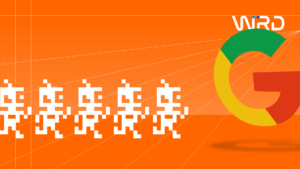Remember ‘Mobilegeddon’ back in 2015? That was when Google updated its algorithm to favour mobile-friendly websites in its mobile search results.
Businesses owners all over the world took note: the future is very much mobile.
Since then, it has become imperative that you provide users with a positive mobile experience, meaning a mobile-optimised website that is fast, easy to access and simple to navigate.
But two years have passed, and it’s time for another big shake-up. This time, it’s coming in the form of Google’s ‘Mobile-First Index’ – and it’s going to hit sites all over the world at some point in 2018.
Here’s what you need to know about the Mobile-First Index so you can prepare your website in time and avoid any negative effects on your search rankings.
Quick Overview of the Mobile-First Index
The Mobile-First Index was first mentioned in November 2016, and since then there has been no end of discussion about what it means for website owners – and when it will finally be implemented.
But what is it?
The Mobile-First Index is Google’s next stage in prioritising mobile on the internet. More searchers are now using mobile devices to search rather than desktops. But too many websites still provide an inferior mobile user experience. Google wants to prioritise mobile, and as a result it is changing how it indexes content.
Simply put, the desktop version of a website has always been the priority – even after Mobilegeddon – but now this is changing to mobile.
Google has always analysed the desktop site to determine how it ranks the mobile site, and this is still the case. Following the update, this will switch around so that Google analyses the mobile version of the site first – hence the name ‘Mobile-First Index’.
So is this actually a big deal? It could be. It all depends on what state your current desktop and mobile sites are in. Some websites will not be affected at all – but some could see a big negative impact on their rankings.
When’s It Arriving?
This is the question that no one has been able to answer with any degree of certainty so far. For a while, Google said it would introduce the index during 2017. However, that date now seems to have been pushed back to 2018.
What we do know is that the switch to the new index will not be one big update that hits every site in the world at the same time. Instead, this is going to be a more gradual change.
The thinking so far is that sites that are not going to be so affected by the change will see the new index implemented first, while sites that need some more work will not be affected until later on.
But it’s not really worth worrying about when it’s going to hit. The real issue is that it will arrive soon, and you need to ensure you are prepared.
How Might Websites Be Affected?
The obvious question you will be asking at this point is: how will all this affect my website?
As mentioned, the new index might not affect your site at all in terms of where your desktop and mobile site both rank. But at the same time, it could prove to be disastrous if you don’t prepare and take the right steps.
The worst possible result is that it could hurt the ranking of your desktop site – even though the index is related to mobile. Because Google will now be looking at the mobile site first to determine rankings, if your mobile site is not as good as your desktop site, you can expect your search rankings to fall.
How to Prepare for the Update
As already mentioned, you might not have to do anything to prepare for the Mobile-First Index. However, there are a number of areas on mobile websites that are likely to cause the biggest problems, and it’s well worth paying attention to these.
Speed Up Page Loading Times
As most website owners already know, fast page loading times are essential to provide a good user experience. Speed has also been an important ranking factor in the search engines for years.
Despite this, many mobile websites don’t provide fast page loading times. Google has helped to improve this with the introduction of Accelerated Mobile Pages (AMP), but many sites do not use this, and mobile users often have to wait for far too long for pages to load.
If your mobile site loads slower than your desktop version, you could be affected negatively by the introduction of Google’s new index. Quite simply, you want to do everything you can to ensure your pages load as fast as possible – and certainly as fast as your desktop version.
Sort this out by heading over to Google’s PageSpeed Insights where you can check your site’s speed for free. If it turns out that some work is needed, you can get some suggestions for how to do this. Some of them might be a bit technical however, so hire a developer to help.
Optimise Your Images
If you have images that rank in Google’s image search and bring in traffic to your desktop website, you also want to make sure that these are not affected when the index is introduced.
To do this, make sure that all images are embedded in your website’s mobile version. Also use alt text to describe what the images contain.
If you don’t do this, you could waste all that hard work you have put into getting your images to show up in search.
Make Sure Your Internal Links Are the Same
If you have internal links on your website (which you should!), make sure that your mobile website has the same links.
Many websites have more internal links on their desktop sites than their mobile sites, especially when they use separate URLs, but this affects the user experience.
If a mobile user visits the site, they are not going to find the same links to the other useful resources that they would on the desktop site. It can also affect how Google crawls your website.
In short, your internal linking must be the same if you don’t want to experience any negative effects of the Mobile-First Index.
Use the Same Web Content
Is the content on the desktop version accessible on the mobile version? The experience should be consistent across both versions of your website so users always get access to the same content no matter which device they are using.
Often, websites hide the content on their mobile sites or remove it completely to improve the design. But from now on you will need to have the same content on both sites so that it is accessible from any device.
This can lead to challenges. For example, if you currently have lots of content on your ecommerce store, it might not look great on mobile. It could even hurt the user experience to include all the content.
The challenge is to find the right solution, which could include using a ‘read more’ button rather than displaying all the content in one place.
Search Engine Watch provides some good examples of websites that are going to be at risk of negative effects due to this issue. One of the sites it highlights is Firebox. Although this uses a responsive website, it hides lots of its content on mobile.
Another site mentioned is New Look, which removes content and internal linking from its mobile sites.
You Might Not Have to Do Anything
Go over your mobile site – or hire someone to do it for you – and note down any differences you find. If your mobile site provides the same experience as your desktop site, you won’t have to do anything to prepare yourself for the update.
However, if you find that internal links are missing, the pages load slower or you are missing content on your mobile version, this needs to be sorted out.
You should also make sure you submit the mobile site version to Google Search Console.
Prepare Your Website for the Mobile-First Index
The introduction of the Mobile-First Index will be a big change, but whether it affects your site or not depends on various factors.
The main thing to do is check the user experience on both versions of your site and make sure they are both the same and are both user-friendly. This is especially important if you don’t have a responsive website.
Once you’re sure your site is ready, you can sit back and wait until Google introduces its new index in 2018. Just keep a close eye on your rankings so you know immediately if your site has been affected, then take steps to rectify any issues that arise as quickly as possible.



